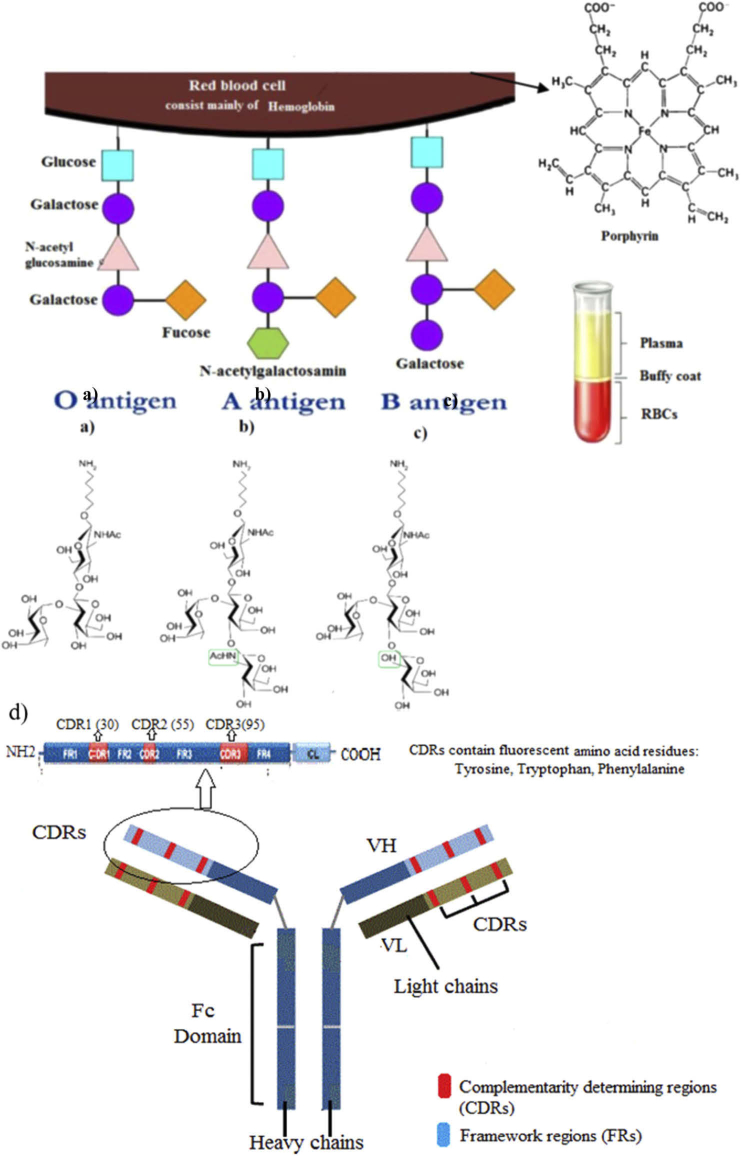Since the normal methodology generates organic waste, there’s a important demand for a straightforward, fast method of blood kind identification with out contamination.
In reality, people could be divided into 4 predominant blood teams whose antigens can be found in pink blood cell (RBC) membranes and the antibodies within the plasma.
Here, UV-vis and photoluminescence (PL) spectroscopic strategies are systematically used to search out the spectra of blood typing antigens (A, B and AB) and antibodies i.e. A-Anti, B-Anti, AB-Anti and D reagent.
The PL spectra of RBCs in numerous blood teams in addition to the corresponding antibodies are efficiently resolved for the aim of blood typing.
The distinctive photophysical traits of these biomolecules together with sign depth and peak emission wavelength in PL spectra are lucidly anticipated to precisely discriminate ABO teams. PL spectra of RBC in optimistic blood typing point out bigger sign and shorter emission peak wavelength comparable to detrimental ones.
Furthermore, the monoclonal antibody PL emissions emphasize that Anti-A advantages larger depth and shorter peak wavelength (blue shift) than B-Anti. In the next, lucid blue shifts are obtained in phrases of antibody concentrations accompanying the elevation of fluorescence sign, most certainly as a result of aggregation induced emission (AIE) phenomenon, fairly the other of the aggregation-caused quenching (ACQ) that’s extensively noticed from standard chromophore.
Those are envisaged as distinctive properties of every antibody to make the most of within the spectral blood typing.

High ranges of Helicobacter pylori antigens and antibodies in sufferers with extreme zits vulgaris.
Helicobacter pylori (H pylori) might play a job within the pathogenesis of extra-intestinal problems together with dermatological ailments.
This research aimed to evaluate the degrees of H pylori antigen and antibody in sufferers with zits vulgaris (AV).This cross-sectional research in contrast the degrees of fecal H pylori antigen and serum H pylori antibody in 100 sufferers with AV and 100 age and sex-matched wholesome volunteers.
Patients with AV had been labeled into gentle, reasonable, and extreme based on the Global Acne Grading Scale. Levels of fecal H pylori antigen and serum H pylori antibodies had been assessed utilizing commercially accessible enzyme-linked immune-sorbent assay.
The sufferers with extreme AV had considerably larger ranges of fecal H pylori antigen as in comparison with the sufferers with gentle AV, reasonable AV, and wholesome controls (P < .001). The sufferers with extreme AV had considerably larger serum H pylori antibody as in comparison with the sufferers with gentle AV, reasonable AV, and wholesome controls (P = .001).
The ranges of fecal H pylori antigen and serum H pylori antibody within the sufferers with gentle AV weren’t considerably totally different from these within the sufferers with reasonable AV (P = .49 and P = .05, respectively).
The sufferers with extreme AV had larger ranges of fecal H pylori antigen and serum H pylori antibody as in comparison with the sufferers with gentle and reasonable AV and with wholesome controls. The indicators of H pylori an infection had been positively correlated with the severity and period of AV.

